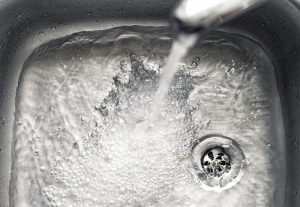 We’ve previously discussed the trouble with hard water in a home’s plumbing before on our blog. There’s a good reason for this: hard water is a problem found across the country, in particular in large cities and their suburbs. In some homes, the hardness level of the water is minor and doesn’t cause noticeable issues. But your home may be one of those where hard water is creating a number of detectable signs—and when you see those, it’s definitely time to schedule water testing so you can find out the type of water softener necessary to counteract the hard water.
We’ve previously discussed the trouble with hard water in a home’s plumbing before on our blog. There’s a good reason for this: hard water is a problem found across the country, in particular in large cities and their suburbs. In some homes, the hardness level of the water is minor and doesn’t cause noticeable issues. But your home may be one of those where hard water is creating a number of detectable signs—and when you see those, it’s definitely time to schedule water testing so you can find out the type of water softener necessary to counteract the hard water.
What does it mean to “soften” water?
We need to do a short recap on what “hard water” is and why it needs to be “softened.” Hard water is water with a high mineral count of minerals like magnesium and calcium. Both of these minerals are found in a lot of the food you eat. You’ve probably seen products advertised with “essential vitamins and minerals” which include magnesium, and calcium is important for bone health and is found in dairy products. So hard water isn’t harmful to you or your family to drink.
The problem is the minerals cause trouble from the plumbing in a house: calcite builds up in pipes creating high water pressure and leaks, damage to appliances, particularly the water heater, and ugly-looking buildup in fixtures. Hard water also makes it difficult to create soap lather and leaves a filmy residue on glass and other surfaces.
Counteracting hardness in water, “softening” it, requires making a swap of the magnesium, calcium, and other hard water ions with sodium ions, a harmless mineral substitute. This ion exchange is done via a water softener.
The water softener at work
A water softener is attached the water main as it enters the home so it can be applied to all the water in the household plumbing system. The water that enters the water softener passes through a chamber filled with resin beads. These beads are soaked in a brine solution that causes sodium ions to adhere to them. As the hard water minerals pass over the beads, an exchange occurs where the hard water ions are attracted to the beads and swap places with the sodium ions. The sodium ions are released into the water supply. This effectively “softens” the water.
Of course, this process can’t keep up forever. Eventually, all the sodium ions will be gone and the resin bead will be covered with magnesium, calcium, etc. minerals. The water softener must periodically go through a recharging cycle where the hard water minerals are flushed from the system and water in a brine tank washes over the beads to restore the sodium ions. The brine tank must be periodically refilled to keep the water softener operating.
As with all whole-house water filtration and purification systems, a water softener needs to have professionals select the right model and then attach it to the plumbing system. To learn more about the installation of a water softener in Hamilton, OH, call our water treatment specialists today.
Ken Neyer Plumbing, Inc. has served Greater Cincinnati and the surrounding Tri State area since 1972.
